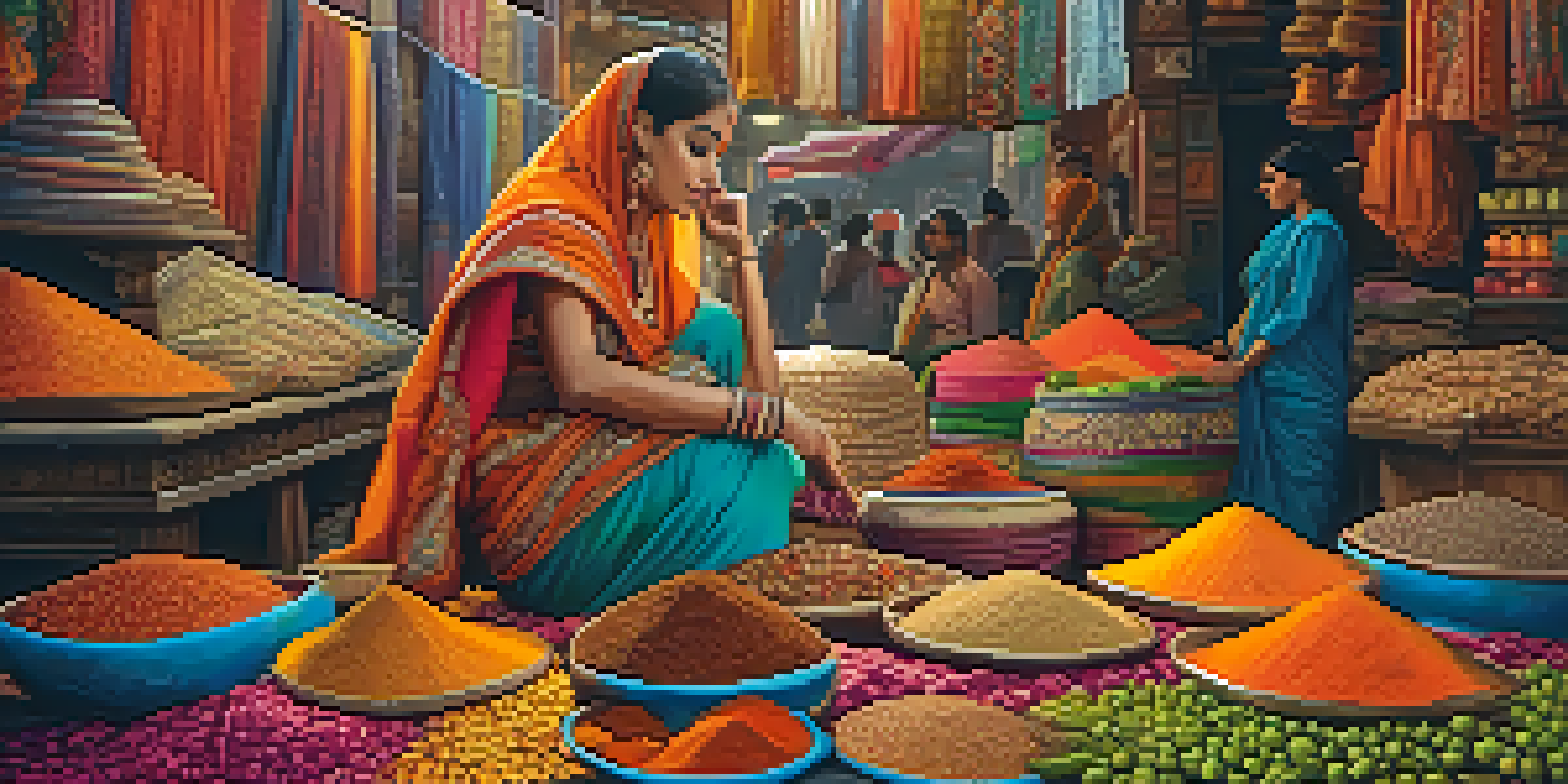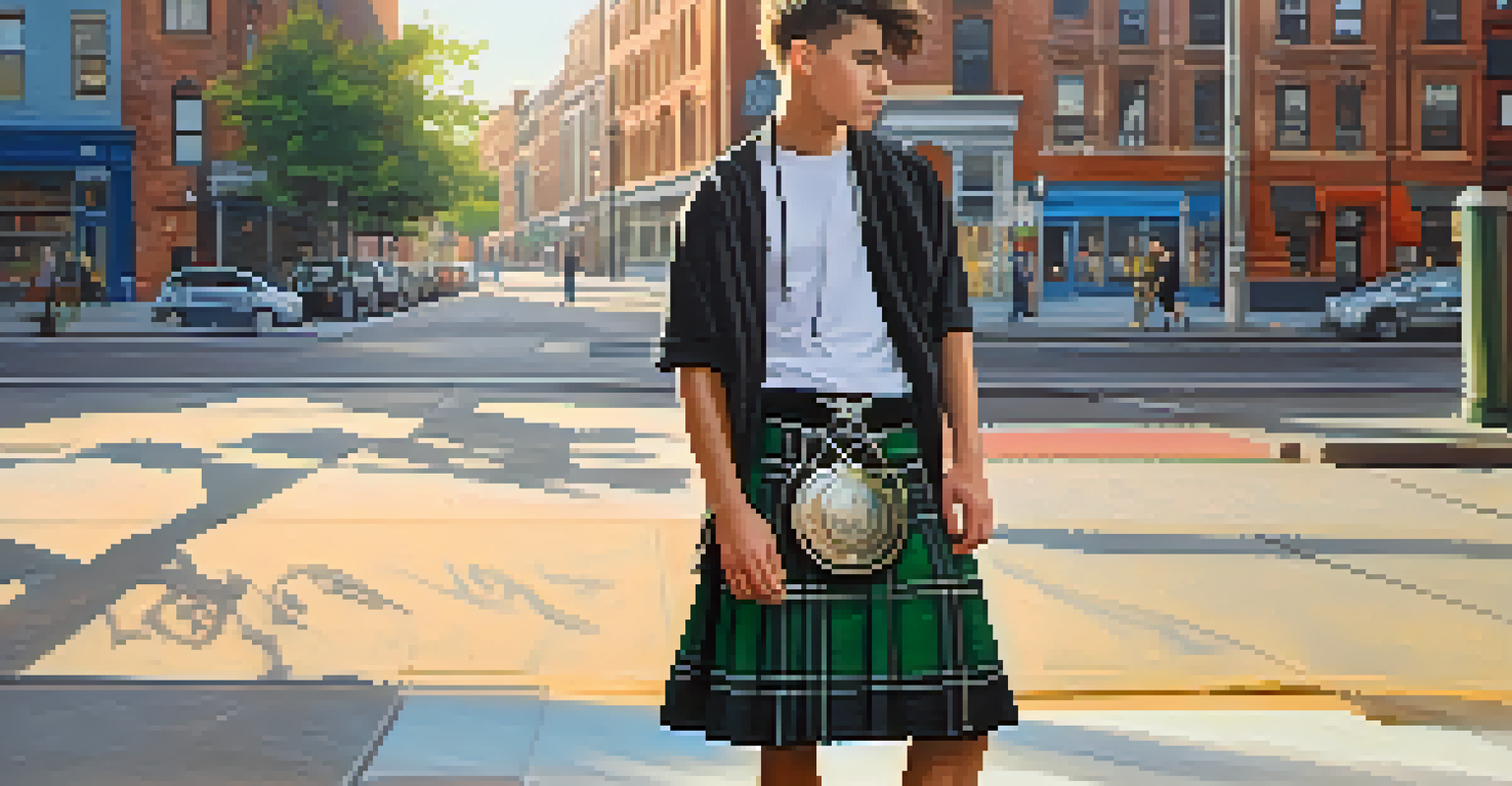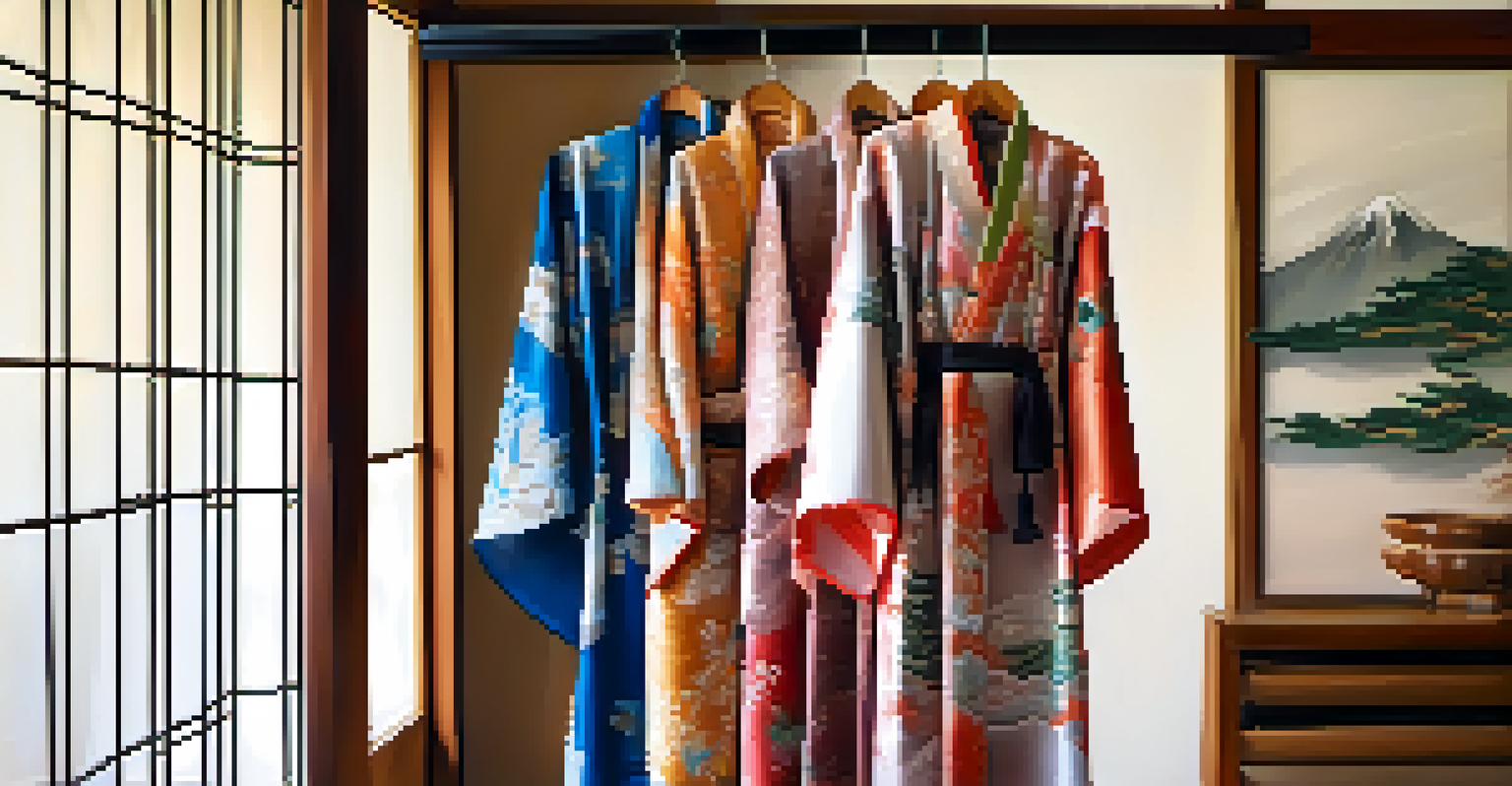Cultural Identity and Fashion: A Reflection of Heritage

Understanding Cultural Identity in Fashion Choices
Cultural identity is a significant aspect of who we are, shaping our values, beliefs, and, ultimately, our fashion choices. From traditional garments to modern streetwear, what we wear often tells a story about our background. For instance, a vibrant sari can reflect Indian heritage, while a kilt may express Scottish roots. These choices are not merely about aesthetics; they connect us to our ancestry and community.
Fashion is the armor to survive the reality of everyday life.
Fashion serves as a canvas where cultural narratives are painted. Each piece of clothing can symbolize history, traditions, and social status, making it a powerful form of expression. When someone wears a dress adorned with Indigenous patterns, they are not just making a style statement but honoring generations of their heritage. This connection between clothing and cultural identity is both personal and communal.
Related Resource
Moreover, as we navigate through a globalized world, fashion becomes a bridge between cultures. When diverse influences blend, such as African prints in Western designs, it showcases the beauty of cultural exchange. This fusion can enrich our wardrobes while also inviting deeper discussions about identity and representation.
Historical Significance of Fashion Across Cultures
Fashion has long been intertwined with cultural history, often serving as a reflection of societal changes. For example, during the Victorian era, clothing styles were heavily influenced by class and gender roles, which dictated how individuals expressed themselves. Today, we see a resurgence of vintage styles that pay homage to these historical roots while allowing for personal reinterpretation.

Many traditional garments carry stories that date back centuries, like the Japanese kimono, which symbolizes elegance and craftsmanship. Each pattern and color in a kimono can denote specific meanings, such as seasons or family heritage. By wearing such attire, individuals not only celebrate their past but also educate others about their culture.
Fashion Reflects Cultural Identity
Our clothing choices serve as a powerful expression of our cultural backgrounds and heritage.
Furthermore, significant historical events have shaped fashion trends, from the influence of the Harlem Renaissance on African American style to the impact of the feminist movement on women's clothing. These shifts demonstrate how fashion can be a barometer for cultural evolution, reflecting not just aesthetic choices but also social values.
The Role of Fashion Icons in Cultural Representation
Fashion icons play a crucial role in shaping how cultural identities are perceived and celebrated in the mainstream. Figures like Rihanna and A$AP Rocky have embraced their Caribbean roots, influencing global fashion trends while promoting cultural pride. Their platforms allow them to showcase traditional attire in modern contexts, challenging stereotypes and sparking conversations about representation.
Clothes mean nothing until someone lives in them.
Additionally, the rise of influencers from diverse backgrounds has opened doors for underrepresented cultures in the fashion industry. By sharing their unique styles on social media, they inspire others to embrace their heritage. This visibility is vital; it creates a sense of belonging and encourages individuals to explore their cultural roots through fashion.
Related Resource
However, the responsibility that comes with this visibility is significant. Fashion icons must navigate the fine line between appreciation and appropriation, ensuring that cultural elements are honored rather than exploited. This awareness fosters a more inclusive fashion landscape where cultural identities are celebrated rather than commodified.
Fashion as a Tool for Cultural Preservation
In a rapidly changing world, fashion can serve as a vital tool for cultural preservation. Traditional artisans, who create handmade garments and textiles, are often the custodians of cultural heritage. By supporting these craftspeople, consumers help keep age-old techniques alive, allowing future generations to appreciate their cultural significance.
Furthermore, organizations and initiatives that promote indigenous fashion play a crucial role in preserving cultural identities. By showcasing traditional clothing at fashion shows or through online platforms, they highlight the importance of these garments in contemporary society. This not only raises awareness but also encourages a new appreciation for craftsmanship and storytelling through fashion.
Globalization Influences Fashion Trends
While globalization allows for cultural exchange, it also risks diluting traditional garments and their meanings.
Additionally, educational programs that focus on the history of traditional garments can empower younger generations. By understanding the significance behind what they wear, individuals can forge a deeper connection with their heritage, ensuring that cultural identities are not lost in the shuffle of modernity.
Globalization and Its Impact on Cultural Fashion
Globalization has significantly impacted how cultural identities are expressed through fashion. With the rise of fast fashion, traditional garments are often diluted or misrepresented in an effort to cater to a global market. This can lead to a loss of meaning behind these pieces, as they are stripped of their historical and cultural significance.
On the flip side, globalization has also provided opportunities for cultural exchange and appreciation. Designers from around the world can now showcase their work on international platforms, allowing for a greater understanding of diverse fashion traditions. This exchange can foster respect and admiration for different cultures, as people become more aware of the stories behind the styles.
Related Resource
However, it is essential to approach this exchange mindfully. As cultures intersect, there is a risk of cultural appropriation, where elements of a culture are used without understanding their significance. This highlights the need for ethical practices in fashion, ensuring that cultural identities are celebrated and respected rather than exploited.
The Future of Fashion and Cultural Identity
As we look to the future, the relationship between fashion and cultural identity is likely to evolve further. With a growing emphasis on sustainability and inclusivity, consumers are increasingly seeking authentic representations of culture in fashion. This shift encourages brands to embrace diversity and collaborate with traditional artisans, ensuring that cultural narratives remain central to their collections.
Moreover, technology is playing a pivotal role in shaping this future. Virtual fashion shows and digital storytelling allow for a broader reach, giving designers from marginalized communities a platform to showcase their heritage. This democratization of fashion empowers individuals to share their stories while fostering a global appreciation for cultural diversity.
Icons Promote Cultural Representation
Fashion icons and influencers play a crucial role in celebrating and elevating diverse cultural identities in mainstream fashion.
Ultimately, the future of fashion hinges on a balance between innovation and tradition. As new trends emerge, it’s essential to honor and respect the cultural identities that inspire them, ensuring that fashion remains a vibrant tapestry of heritage and personal expression.
Conclusion: Embracing Heritage Through Fashion Choices
Fashion is more than just clothing; it is a reflection of our cultural identities and heritage. By embracing our roots and the stories behind our fashion choices, we celebrate not only ourselves but also the diverse tapestry of cultures that enrich our world. Whether it’s wearing a traditional garment or incorporating cultural elements into modern attire, each choice contributes to a broader narrative of identity.
As consumers, we have the power to support ethical fashion practices that honor cultural significance. By choosing to invest in brands that prioritize cultural representation and sustainability, we advocate for a fashion industry that respects heritage while fostering creativity. This conscious approach to fashion can lead to meaningful connections with our own cultural identities and those of others.

In a world where cultural exchange is becoming increasingly common, it’s essential to engage with fashion thoughtfully. By understanding the history and significance behind our clothing, we can foster a deeper appreciation for the rich diversity that exists within the fashion landscape, ensuring that cultural identities continue to thrive.